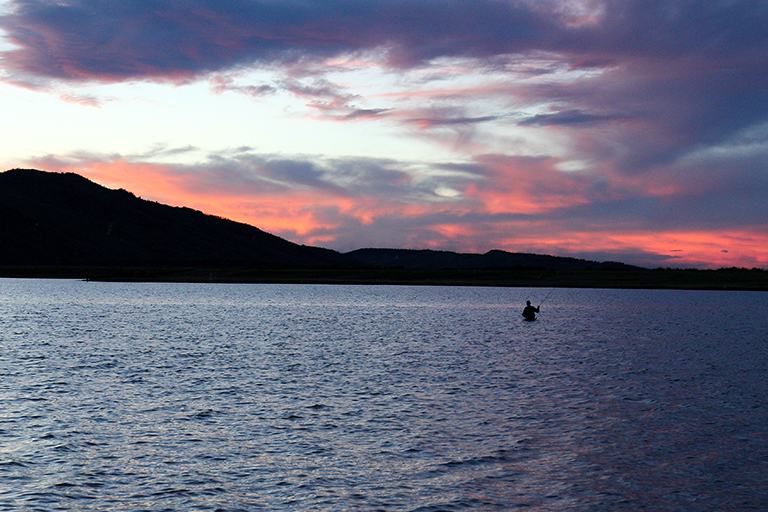By Dennis Smith
The boys and I have fly fished a chain of sagebrush lakes in the North Park region of Colorado for well over 30 years; long enough that, by now, you’d think we would have figured them out. But we haven’t. I suppose that’s what keeps us coming back: We want to crack the code.
Of the three lakes in the cluster, one of them (the northern most) was long ago designated a Gold Medal brown trout fishery by Colorado Parks and Wildlife, so it’s popular — if not downright famous — as trophy brown trout water. It’s also notorious for being an annoyingly moody lake. One day, trout will rise all around you; the next day, you’d swear there wasn’t a fish in the whole stinkin’ lake.
The lake is extremely fertile, probably a result of all the nutrient runoff from the surrounding cattle ranches, but I’m not a biologist so I can’t say for sure. What I do know is that it’s extremely productive. Due to the incredible amount of forage in the lake, the trout can grow as much as 5 to 7 inches a year feeding on a vast and varied diet of crayfish, minnows, scuds (freshwater shrimp), damselflies, mayflies and chironomids. Four- and 5-pound fish are not uncommon here, and it’s entirely possible to hook a 7 or 8 pounder.
Naturally, everyone seems to have their own ideas about how to fish the thing — we’re fishermen after all, each with our own unique bag of tricks. Some like to belly boat the lake, drifting with the wind while trailing woolly buggers and such. Others use troll spinners or spoons behind a slow-moving boat. Fly fishermen like to cast dry flies to the lake’s callibaetis hatches, or try to replicate the deep-water emergence of chironomids by drifting midge pupae on long leaders beneath a strike indicator. Some prefer to stalk the shorelines casting scuds or damselfly nymphs to cruising fish. All of these methods work, but none of them work all the time.
One thing everybody seems to agree on is that the lake fishes best early and late in the year, and early and late in the day. Iceout is reputed to offer the best chance to “stick a real pig,” as they say, but we never did well the few times we made the trip in late April.
We prefer to fish the lake in late summer during those quickly fleeting hours after sunset when the outline of Sheep Mountain carves a jagged, black silhouette against the fading pastel of purple-gray and salmon-painted clouds. In the spooky stillness, you become acutely aware of the waves lapping softly against your waders, the barely perceptible flutter of bats overhead and the distant muttering of a mallard hen. Suddenly a coyote yip-howls, freaking you out just as your line draws tight and your rod bows deeply. Somewhere out there in the night, a big fish rolls on the silver-black surface of North Delaney Buttes Lake and, for just a minute, you think you finally broke the code.

